It was a hot July morning in Quang Nam . We left the hotel at 5am, drove to the foot of Ngoc Linh mountain (village 2, Tra Cang commune, Nam Tra My district, Quang Nam), changed our shoes into specialized boots prepared in advance by Quasapharco staff and began our journey to find the place where the precious ginseng, known as the "national treasure" of Vietnam, lives: Ngoc Linh mountain top.
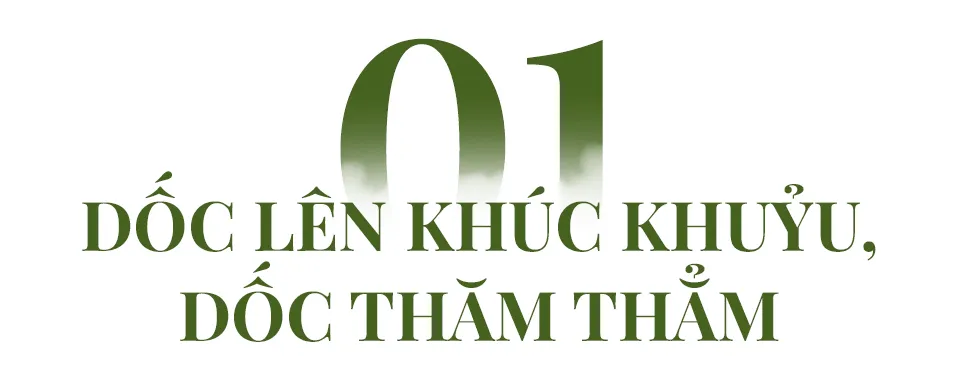
The road to Quasapharco's largest Ngoc Linh ginseng farm in Quang Nam is less than 3 km, from the "foot of the village", in the language of the guides. However, it took nearly 3 hours for us to reach our destination. The first half kilometer, women were given priority to be transported by motorbike, but afterwards we all regretted climbing up without looking in advance. The dirt road was muddy because of recent rain, less than 1 meter wide but streaked with 2-3 deep ditches caused by water erosion and plowed wheel tracks... making me not even dare to breathe heavily. The thought that if I just lost control of the steering wheel, both me and the motorbike would fall into the undulating forest beside me haunted my mind.
Ho Nhat Bao, the agricultural engineer in charge of Ngoc Linh ginseng garden, who was also driving me, said "this is the first time I've gone by motorbike" when I asked him to go up. I didn't know if Bao was joking or not, I just froze behind him while the wheels slid up and down the deep ditch. He kept revving the accelerator but the motorbike still "crawled" on the road (if it could be called a road) which couldn't be more terrifying. After a while, Bao stopped the motorbike and explained: It's too slippery and steep up there, the motorbike can't go up.
I also managed to jump down, overjoyed. It felt like I had just escaped the brink of death. That was also the feeling of the people behind me when they were let down to walk.
But we rejoiced too soon. The remaining distance was much more difficult than the fear we had experienced. The path was small, steep, and slippery, causing me to fall repeatedly, having to hold on to the person next to me to keep going. The higher we went, the lower the temperature became, the space was gloomy and dark.

The trail on the top of the mountain is tiny, the tree roots protrude from the ground, crisscrossing each other, making it difficult to walk.
I looked around, the trees were dense, many of them were old, probably older than me, their canopies covered the sky, making it seem like it was about to rain. Thinking of the stories I had read before the trip, about the mysterious Ngoc Linh mountain with its unsolved mysteries, I felt creepy. Rumor has it that very few people can reach the top of the sacred Ngoc Linh mountain because the compass suddenly stopped working at the foot of the mountain, and the phone also went dead. In the thick fog all around, the forest was dense and shady, the sun was always overhead so it was impossible to determine the direction. That was the reason why everyone who came here got lost. The Xe Dang people today still believe that the mountain top has an ancient curse that forbids strangers from entering... Thinking of that, I suddenly got goosebumps. A sudden silence fell over our group of women, we had been separated for a while without anyone noticing.
Finally reaching the top of the mountain, despite the cold air, we were all drenched in sweat. I looked around, but I couldn't see the ginseng garden, only the trees were denser, the air was darker and wilder. Before I could ask, Mr. Hoang Minh Chau, General Director of Quasapharco, pointed down the mountainside and said "keep going" and walked straight ahead. We followed, like a machine, no one had the energy to ask any questions. Now we were exactly through the forest because even the slippery, risky path was gone. There was only a tiny path, with tree roots protruding from the ground, intertwined and very difficult to walk on.
I remembered Tran Bao Minh's words: "The best things are always the best hidden", trying to lift my legs that were getting heavier and heavier. Luckily, the next stretch of road was not too long. After walking for less than half an hour, we "fell" into a beautiful valley. That was Quasapharco's "headquarters" for growing Ngoc Linh ginseng with hundreds of thousands of precious ginseng plants of all ages, from newly planted to about to be harvested. I opened the compass, the altitude was over 1,600 m. That means at the point where we started to go down, it could be over 2,000 m. I felt admiration for myself when I looked down at my muddy clothes...
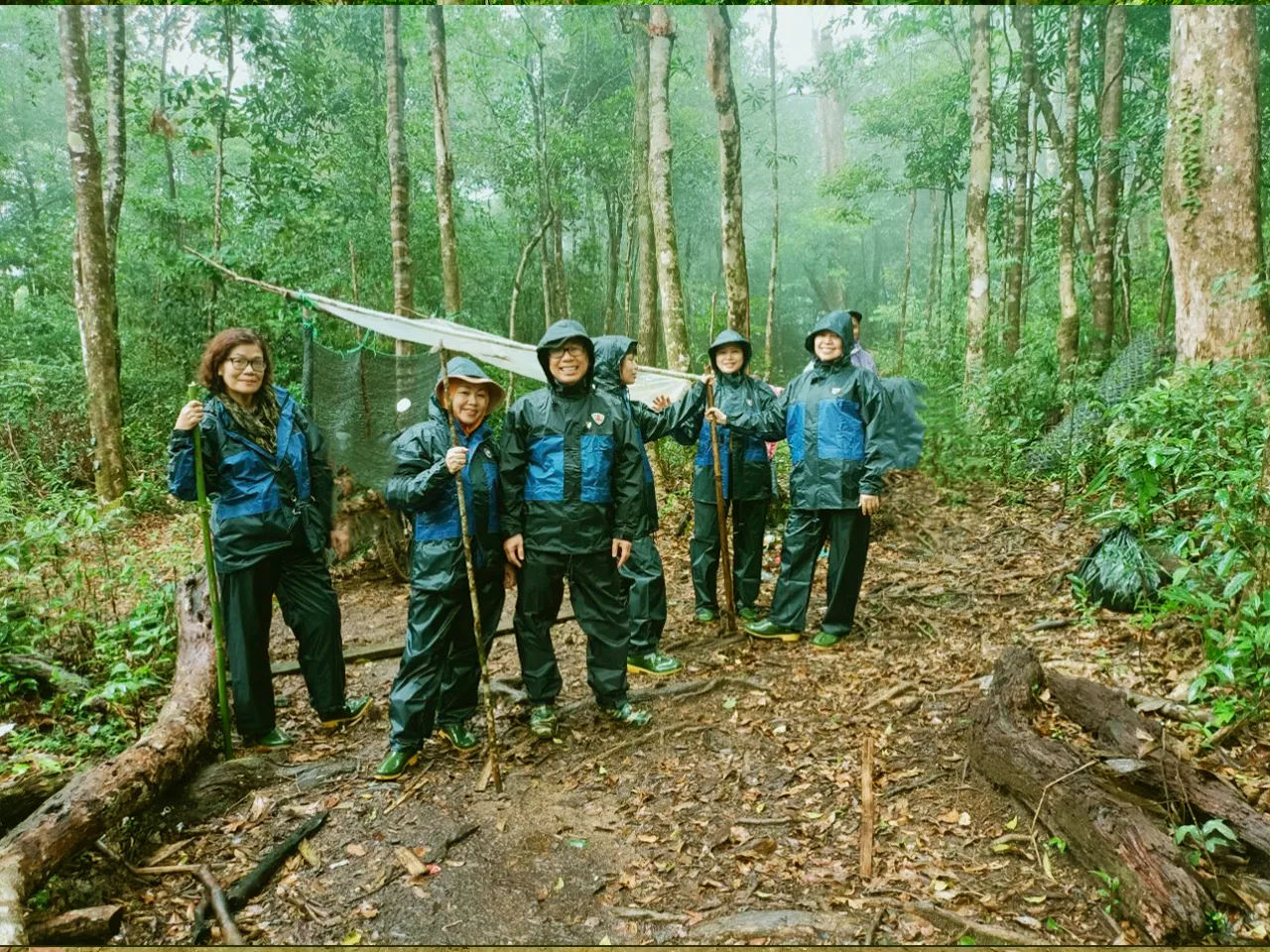
The pants were tied tightly to avoid leeches, and each person was given a stick to wear in the rain, and then they returned through the forest.

A journey in which each of us understands more than ever the feeling of "overcoming ourselves"
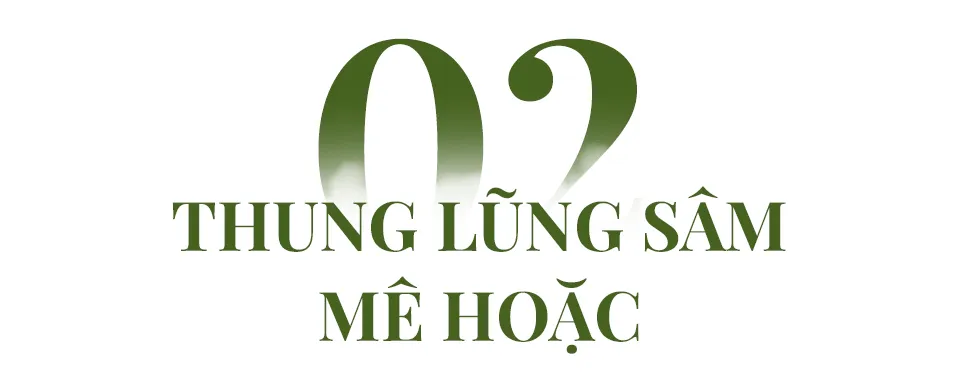
It was around 13 o'clock. If the whole journey had been gloomy, at this time, the sunlight was shining through the leaves, dancing with the occasional gust of wind as if welcoming us. Somewhere, the sound of flowing water, the sound of dry leaves rustling under the feet of curious visitors, mixed with the echoing sounds of the mountains and forests... created a surreal romantic scene. We were all stunned, the nearly 3-hour journey through the forest was gone.
Quasapharco's Ngoc Linh ginseng farm is located in the middle of the forest, surrounded by many large trees that stretch up into the open space above and then spread their canopies out to cover the surrounding area, as if to protect and caress both the trees and the people below. Nearly 40,000 ginseng trees spread over an area of about 7 hectares are planted quite elaborately. Older trees are planted on beds about 20 cm above the ground; younger trees are planted in small ceramic pots, and the nursery is raised to face level with wooden trellises...; all have opaque white covers.
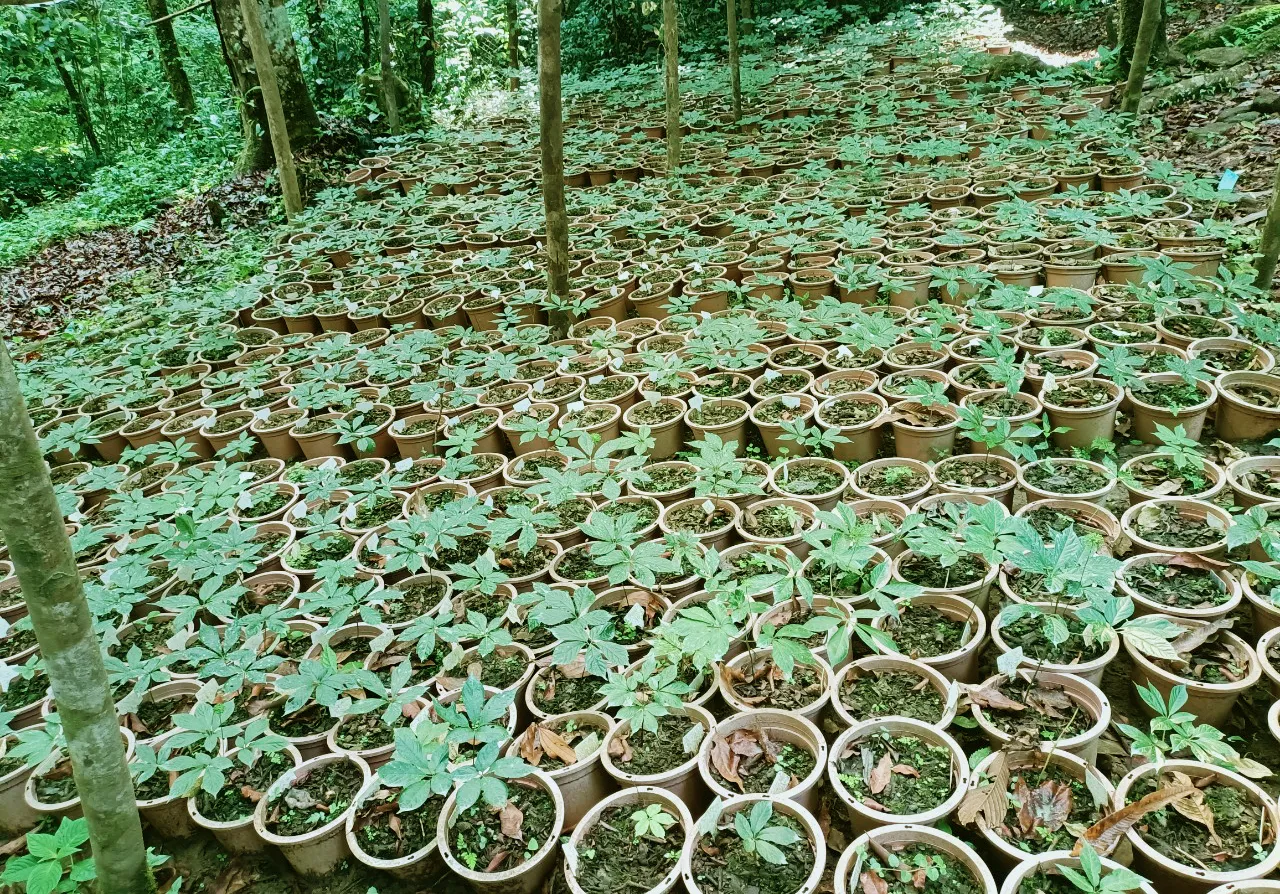
Ngoc Linh ginseng is very picky, must be grown on soil that is moist enough, rich in nutrients, has a high amount of organic humus in the soil, still retains the structure of the primary forest and has a canopy cover of 70 - 90%.
Mr. Hoang Minh Chau explained that Ngoc Linh ginseng is very picky, it must be grown on soil that is moist enough, rich in nutrients, has a high amount of organic humus in the soil, still retains the structure of the primary forest and has a canopy cover of 70 - 90%.
"But that's just the basics, in reality there are still many problems. For example, our ginseng garden has to be raised much higher than the ground because this is an old primeval forest, the roots of the trees are intertwined like a spider web underground, making it impossible for the ginseng to come up to photosynthesize, produce fruit, and produce fruit. Normally, ginseng has 9 months to grow, 3 months to hibernate. But because it can't come up, it sleeps all the time. It also grows while dormant, and its nutrients are eaten away by other plants, so the tubers are small. So we have to move it higher, buy humus, and make the soil porous...", Mr. Chau explained and proudly introduced that this is the first garden in Vietnam to have VietGap certification.
Before we arrived, Korean experts in the cooperation program with Quasapharco were also here. "Korea has developed the ginseng industry for hundreds of years, so they have a lot of experience in growing and processing ginseng. They researched the color of the roof and the direction of the garden for the best growth of ginseng," Chau said, pointing to the garden in front of us: "The Korean man measured that it was a bit lacking in light, so we will not cut off the light anymore. This roof must also be changed to a different color to optimize efficiency."
We know that Ngoc Linh ginseng is difficult to please, but to this extent, it is truly difficult to imagine without being there, without seeing it with your own eyes. Not to mention, the two "chronic" diseases of Ngoc Linh ginseng, rust and root rot, are always rampant, and every 3 years there is a new epidemic. That is why in the middle of the dangerous sacred forest, there must always be many people, in addition to their protection duties, who monitor every day to promptly respond and take care of the plant to help it grow best.
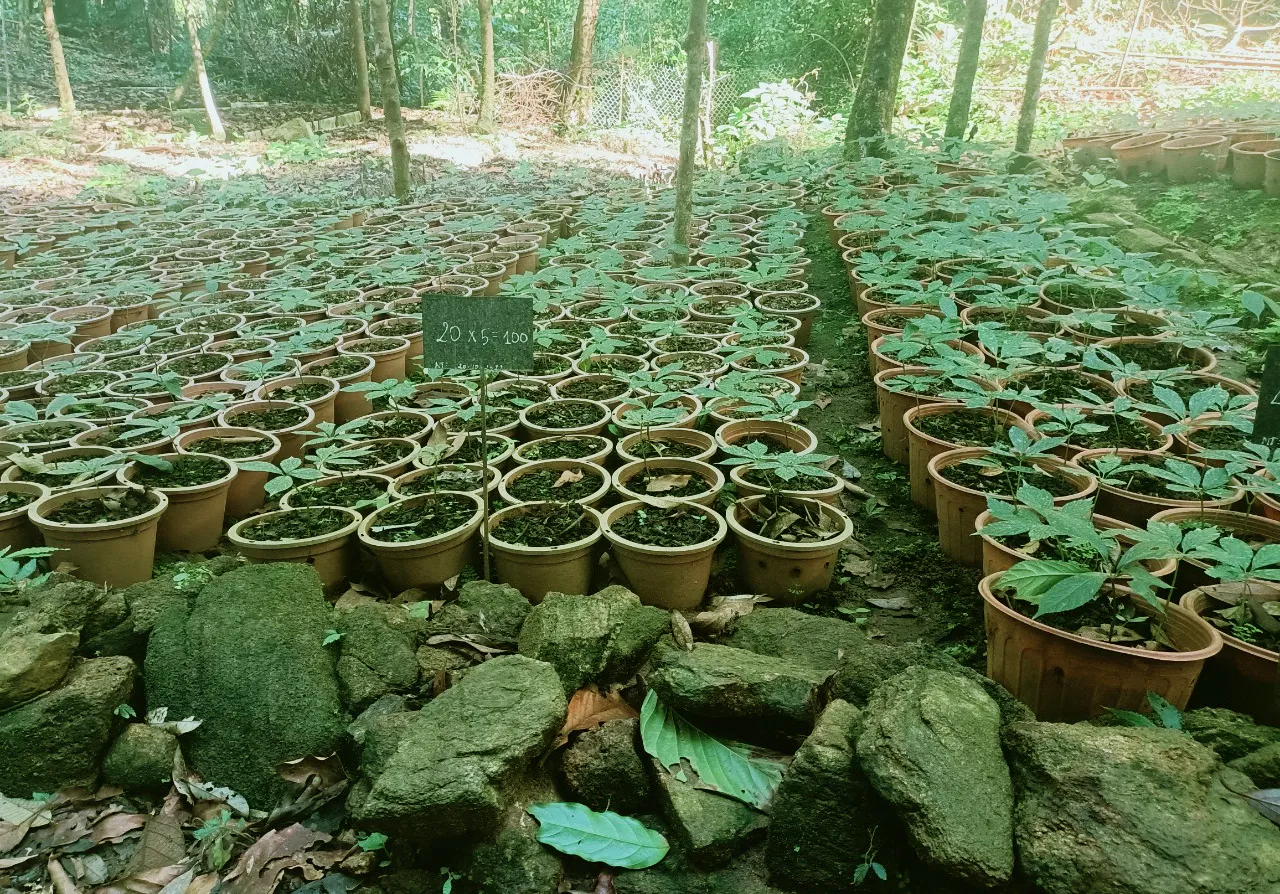
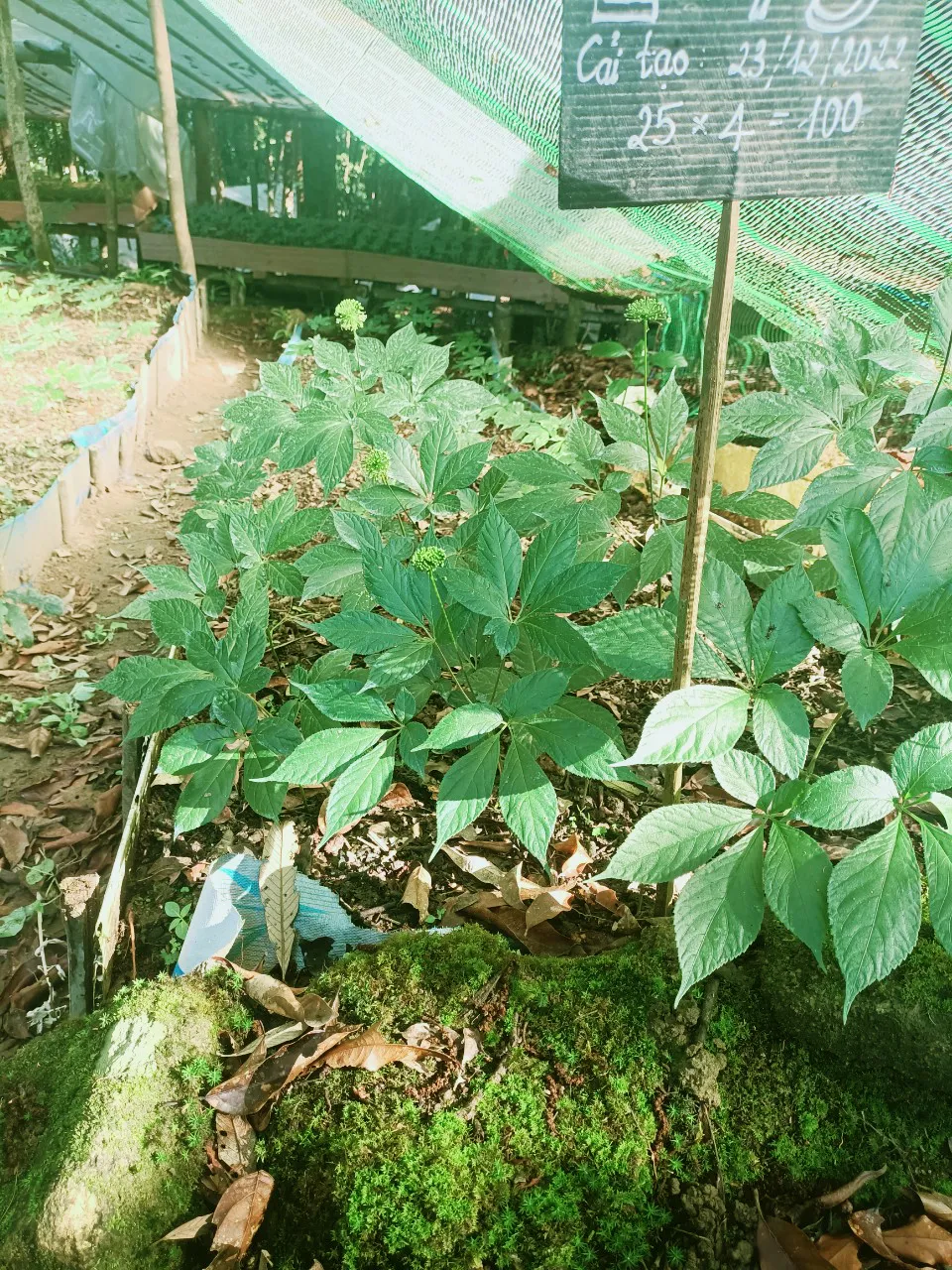
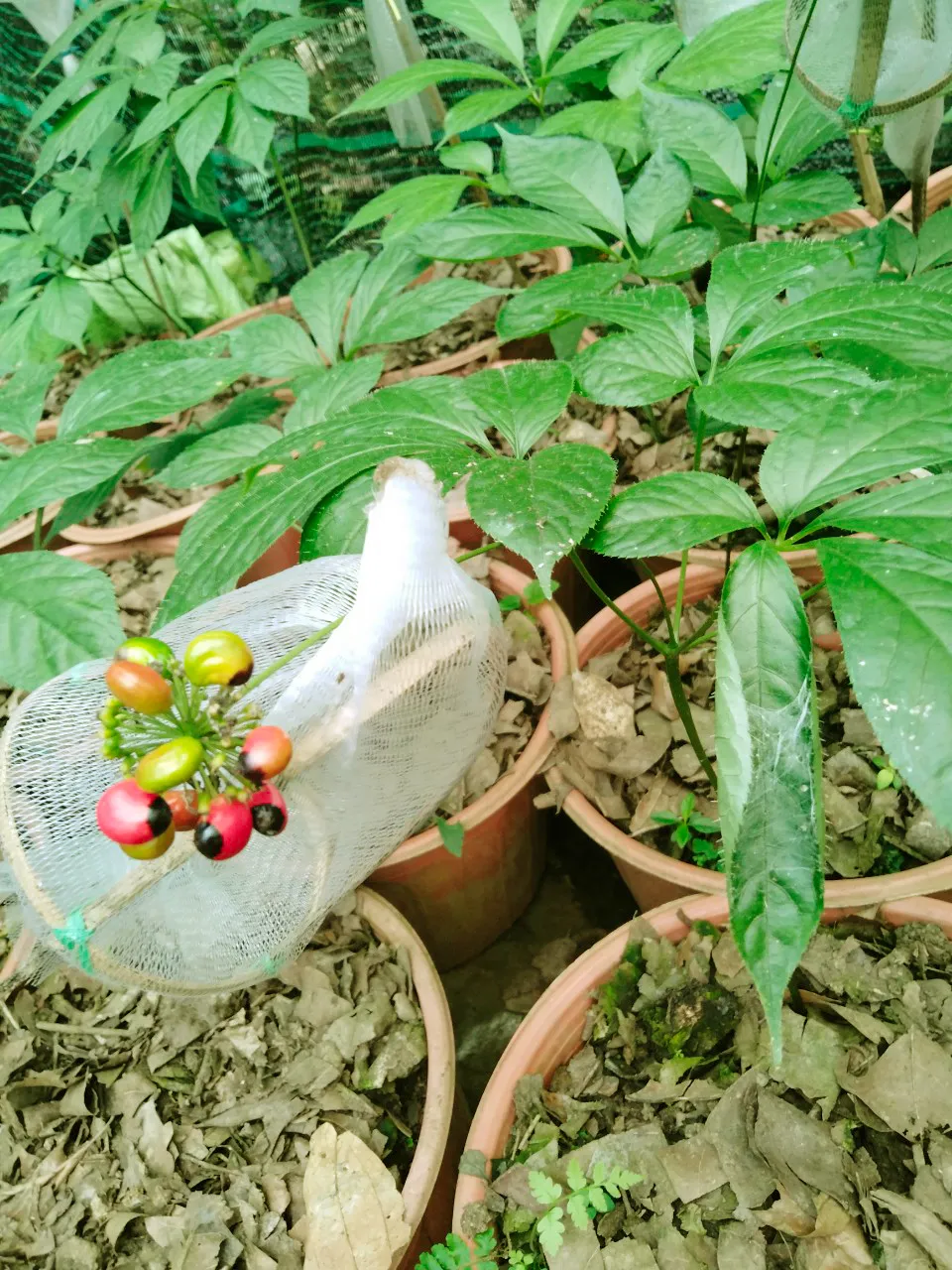
Quasapharco's Ngoc Linh ginseng garden on the top of Ngoc Linh mountain
"The company is testing a vaccine to treat rust and root rot. The results will only be known after a rainy season because the plants usually carry the disease after rain. If the vaccine is effective, the success rate can reach 50% of the total ginseng grown, contributing to lowering the price of Ngoc Linh ginseng. Currently, the success rate is very low, only 1 - 2/10, according to statistics from long-time ginseng growers. That is one of the reasons why Ngoc Linh ginseng is expensive and rare, besides its great value," said Mr. Chau.
Popularizing Ngoc Linh ginseng, so that many people can use this precious ginseng, is also the aspiration that Tran Bao Minh shared with me 2 years ago, when Nutifood completed the investment procedures in Quasapharco, officially entering the "territory" of herbs, especially rare herbs. "Instead of selling ginseng roots, we will research the 52 completely natural saponin compounds of Ngoc Linh ginseng, which substances can increase resistance for children 2-3 years old, which substances help children 5-7 years old develop intelligence, what do men need, what do women want to supplement, what ingredients support the elderly who are afraid of cardiovascular disease and stroke... After separating them, we will put them into each type of product suitable for each subject," said Mr. Minh.
Last May, the first product that Nutifood applied Ngoc Linh ginseng: Värna Elite milk was officially launched on the market. Possessing ingredients extracted from Ngoc Linh ginseng combined with Cordyceps, Värna Elite milk with a special formula specifically for the Vietnamese physique, verified by the Nutifood Nutrition Research Institute in Sweden, helps to supplement complete and balanced nutrition, thereby enhancing overall physical health.
A natural, long-lived Ngoc Linh ginseng root costs up to hundreds of millions of dong, even billions of dong. Therefore, the number of people who can use it is very small. Not to mention that because it is too expensive, the situation of counterfeit Ngoc Linh ginseng is increasing, so even people with money may not be able to buy the real ginseng. However, now, Vietnam's "national treasure" has been brought to more people by Nutifood, in this way.
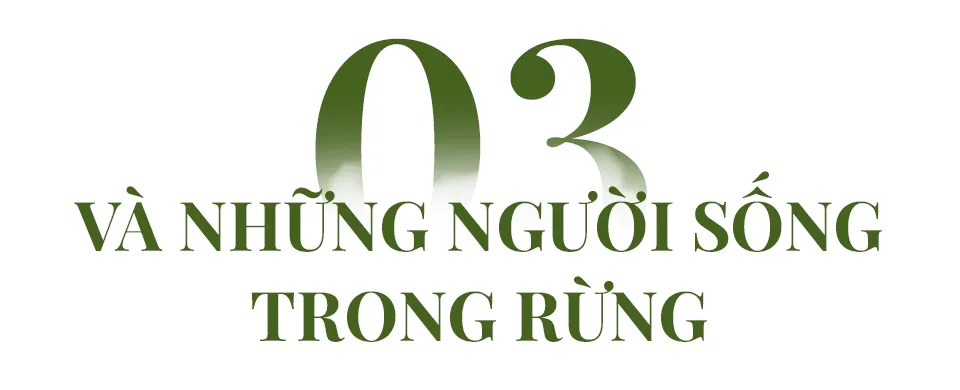
It was not until I returned, when the roll call was complete, that I dared to ask Mr. Hoang Minh Chau about the curse of the sacred mountain. He laughed loudly: If you get lost in the forest, find the stream. Go to the end of the stream, and there will be a place where people live. That is the secret that the "forest man", as the young Xe Dang man named Hien is called, passed on to the people here. Having lived in the forest since childhood, he knows which leaves are edible and which are not; knows how to survive if he gets lost; knows how to turn everything around him into food or weapons to protect himself from the risks that the jungle brings... and cooks very well. The day we arrived, the "forest man" treated us to a delicious dish of grilled meat in bamboo tubes.
"Forest man" is one of 6 people living on the mountain, whose job is to protect and take care of Quasapharco's Ngoc Linh ginseng garden. Every month, they get 4 days off to visit their families and then return to the sacred mountain to do their duty. All the daily necessities are carried from below. But in the rainy season, the main food is dried fish because landslides make it very dangerous to travel. Ho Nhat Bao told me that the terrain is rugged and there are always guards, so there is almost no theft here. Their main job is to make beds, prepare seedlings, collect seeds, plant trees, make humus... to prepare for the new crop. Their day starts at 5:30, they have breakfast and then split up to visit the garden, take care of it, catch insects, hunt rats, detect strange signs that can damage or cause disease to the ginseng plants to find the earliest and fastest solution.
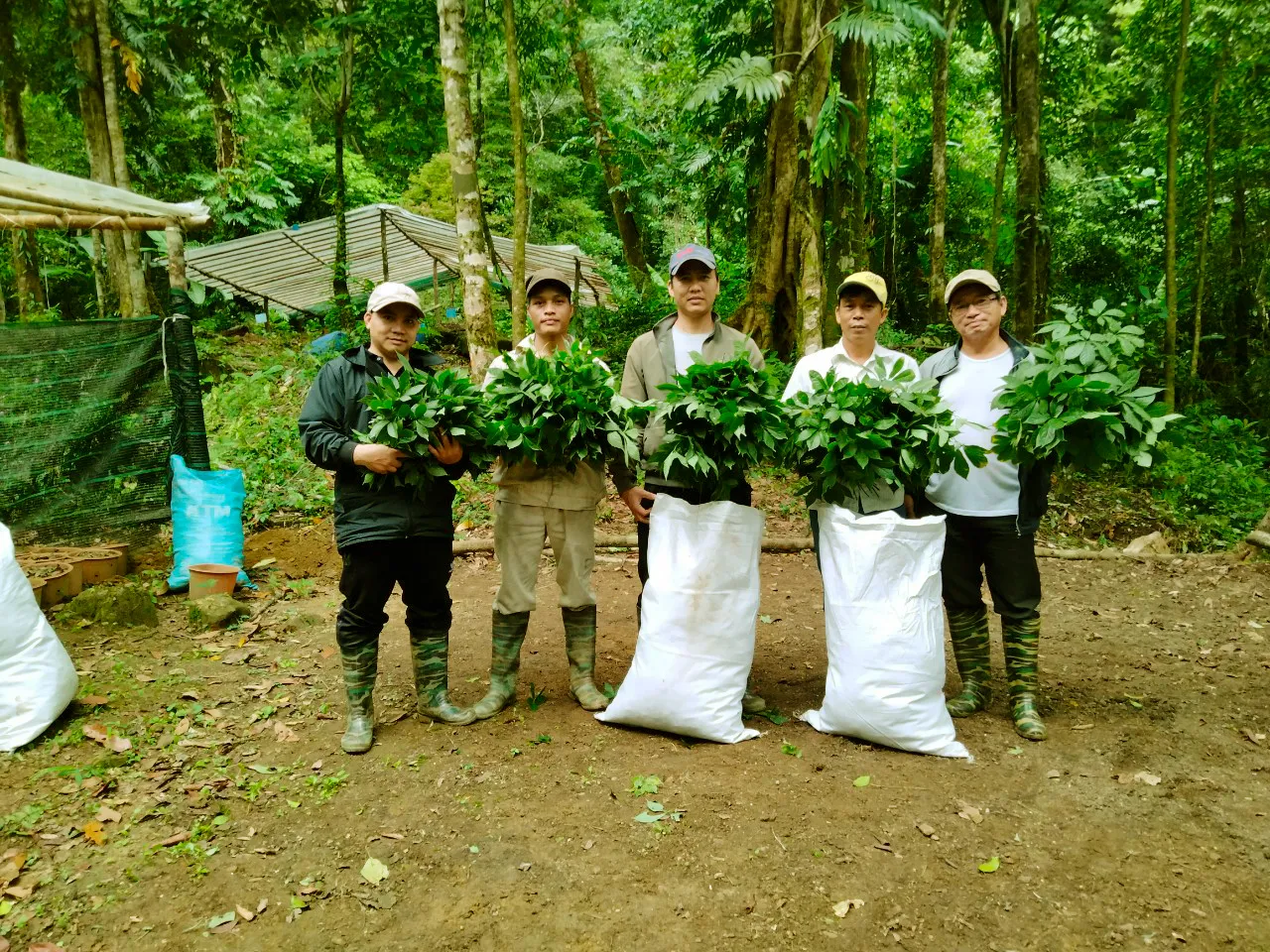
Harvesting Ngoc Linh ginseng leaves
"At night, if there is wifi, we watch movies, otherwise we just sleep. The company installs wifi for work convenience and for us to have entertainment, but the network is very unstable because of the continuous rain and storms. It rains on average 4-5 days a week," Bao said. But what Bao is most afraid of are snakes and centipedes. "Everything up here is poisonous, whenever it rains, they sneak into the shack. They camouflage themselves so well that it's hard to recognize them," he showed me a photo of a snake that had the same color as dry leaves, which some young Xe Dang people confirmed, "if you get bitten, you're guaranteed to not be able to walk 10 steps. That's why boots are an indispensable tool here."
Hearing Bao say that, I jumped. I remember when I changed my boots, I shook my head and was afraid that I wouldn't be able to climb the mountain because I was not used to it. Luckily, no snake asked me anything...
Just as Bao said, about an hour after we arrived, the sunny weather suddenly turned to pouring rain. Water seeped through the leaves, poured down on the roof of the hut, creating rustling sounds, then occasionally rushed like it was sulking, like it was angry. The first time I saw the rain in the forest on the sacred mountain top, I suddenly felt sad and desolate. I looked at them, the people who had lived in the forest for at least 2 years, many for 6 years... and truly admired them. Besides making a living, only love for the forest, for the precious ginseng species could keep them here. I believe so. Just like Mr. Hoang Minh Chau, whom I often joke about as "the person who fell in love with Ngoc Linh ginseng". Studying maritime in Australia, he was "dragged" into the path of herbs by his brother Tran Bao Minh and then got lost, so passionate that if he wasn't stuck, he would climb the mountain to visit the ginseng at least once a week. "Seeing the tree grow day by day, blossom, bear fruit... is so great", Mr. Chau looked at our appearance and encouraged us.
But the rain was getting heavier, the cold began to seep into our skin, and the sky was dark. There was no other choice, so we put on raincoats, boots, and tied our pants together to avoid leeches. Each person was given a stick, and we braved the rain, through the forest, and down the mountain. A journey that helped each of us realize what it meant to "go beyond our limits".
More importantly, that journey also helped me understand better why Nutifood did not "sell the ginseng and end the game" but "if it is too expensive, we have to apply technology and techniques to make it cheaper, apply it to many different products so that many people can enjoy that goodness", as Tran Bao Minh declared.
Those are the values that Nutifood people pursue when entering this field.

Värna Elite milk product, the first product that Nutifood uses Ngoc Linh ginseng combined with Cordyceps, will officially launch on the market in May 2023.
Nutifood

Thanhnien.vn



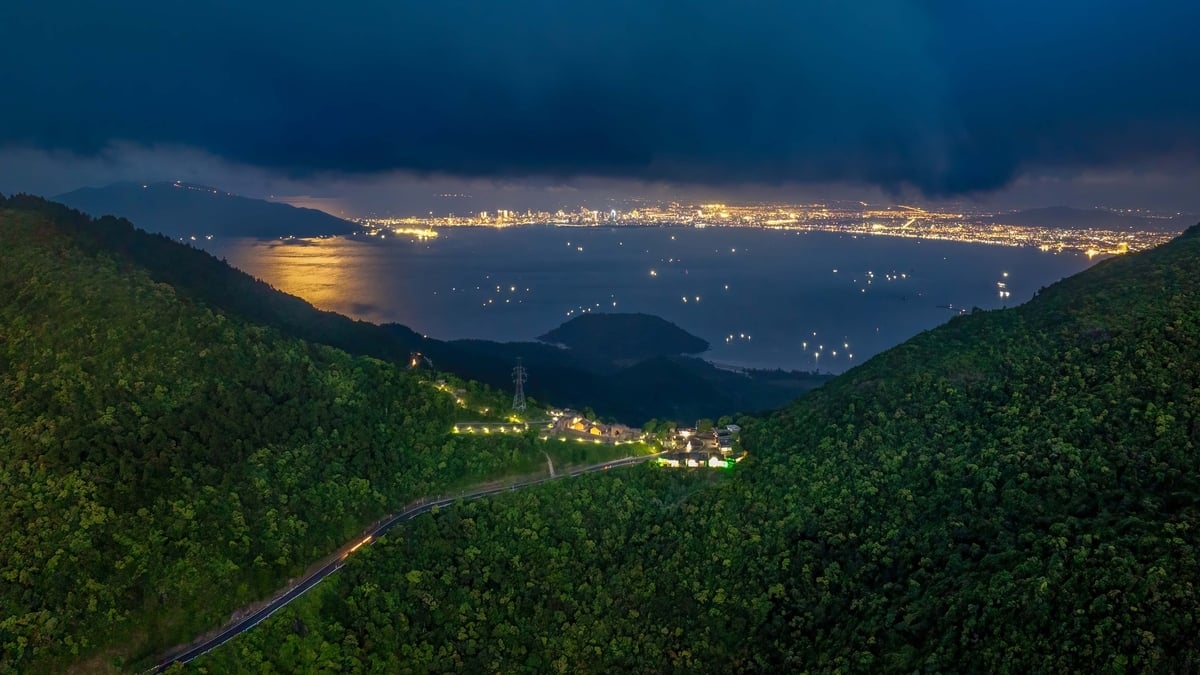

![[Photo] Prime Minister Pham Minh Chinh chairs a meeting on the implementation of the Lao Cai-Hanoi-Hai Phong railway project.](https://vphoto.vietnam.vn/thumb/1200x675/vietnam/resource/IMAGE/2025/5/20/0fa4c9864f63456ebc0eb504c09c7e26)
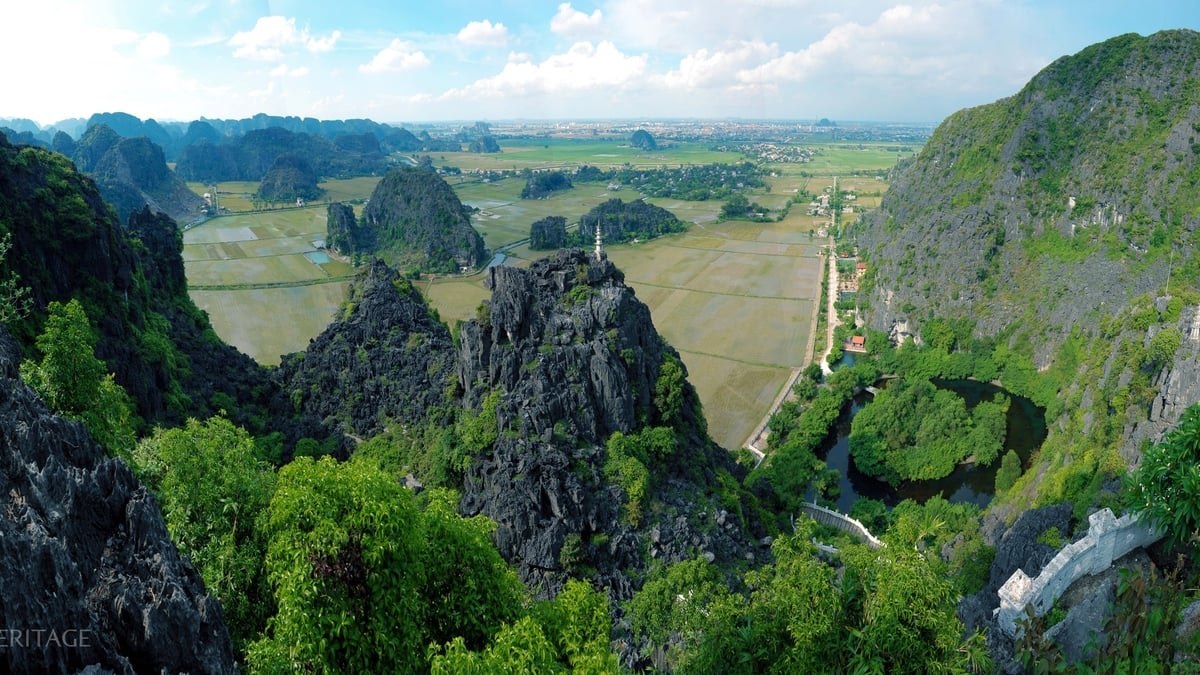


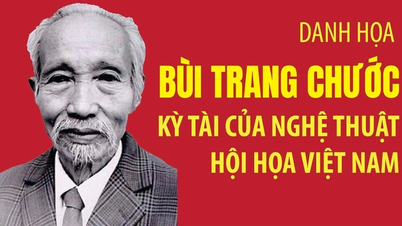

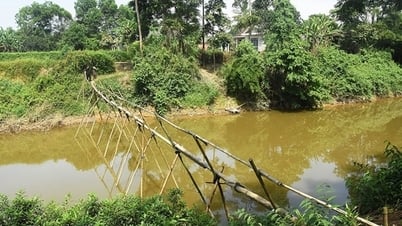

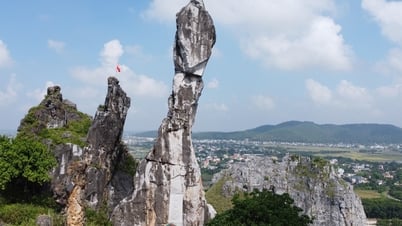

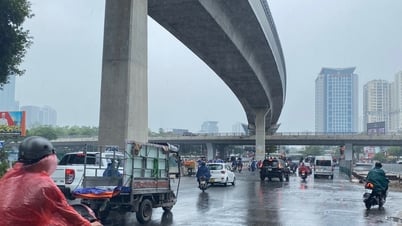












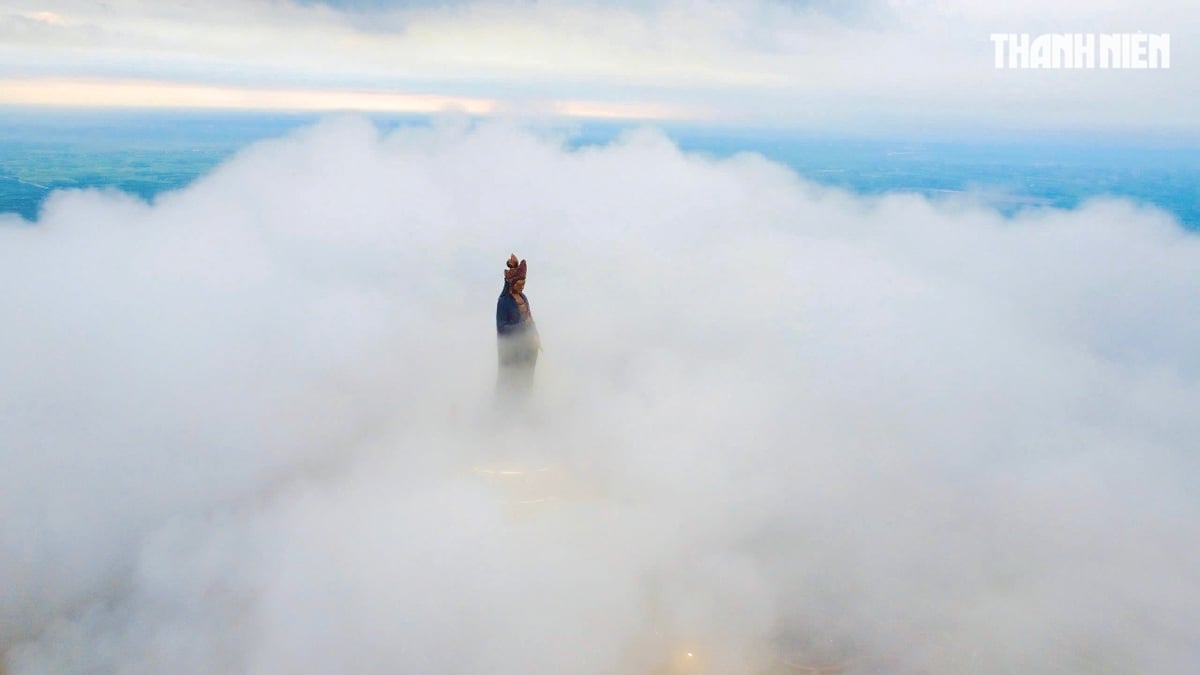

































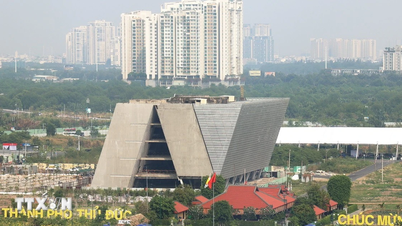
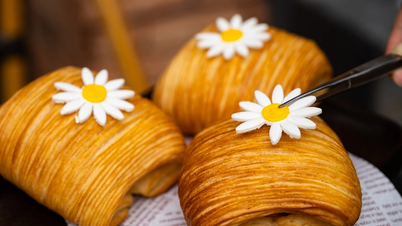

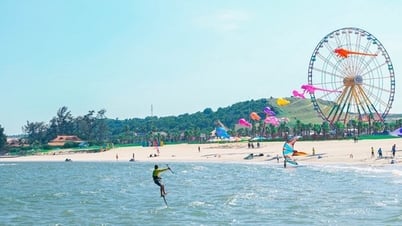

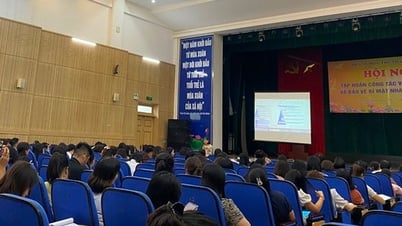




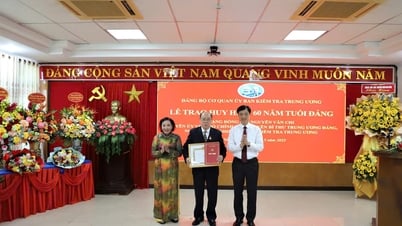

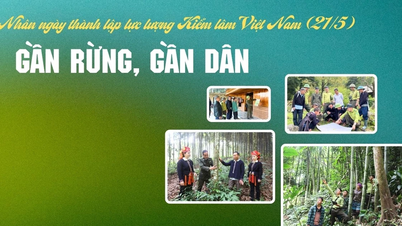

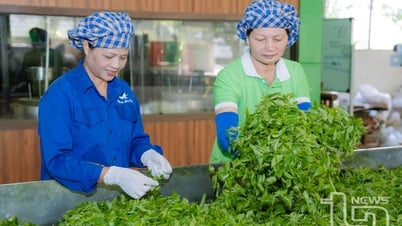



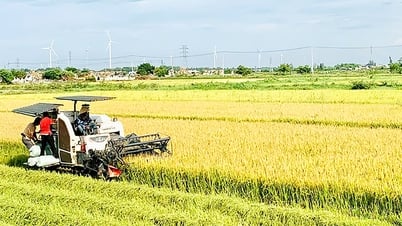
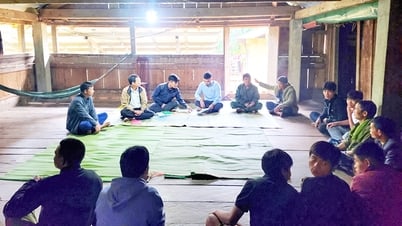













Comment (0)